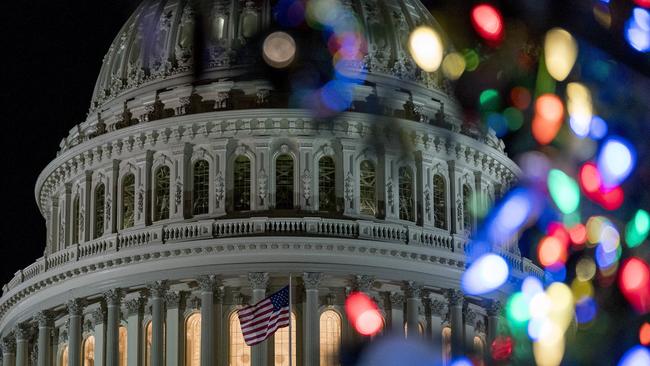
Like Australia, the United States is struggling to restore business investment momentum.
While in Australia we have done little to tackle the problem, it is number one on President Donald Trump’s agenda and the US looks set to lead the world in the looming computer-driven industrial revolution via the tax package being negotiated between the House of Representatives and the Senate.
All the publicity concentrates on the reduction in corporate tax rates from 35 to 20 per cent.
Australians need to understand that the package is much more extensive and we will have to follow many of the US moves or be left behind in the new world.
So in the second part of my series on relighting the investment fires, I am going to focus on how one nation, the US, is tacking a similar problem to the one we face.
PwC’s US tax partner Bernard Moens and Australian tax leader Pete Calleja assisted me in the analysis.
* Currently American enterprises can write off certain types of capital expenditure. Now the definitions are being widened to cover almost all plant. That’s a huge incentive to invest particularly as there is a time limit. Under the House plan the accelerated write-offs end after five years, while under the Senate plan after five years the write-offs are ratcheted down.
* Both the House and the Senate plan special “anti-base erosion” taxes. The Senate taxes raise $140 billion and the House $95 billion over 10 years. Both systems have considerable implications for Australia. Under the House version if an overseas company sells goods or services to a US company for, say, $100 and the American company then onsells for $120 and is taxed at 20 per cent on the $20 profit. Then comes the twist.
In addition the US will ask the Australian supplier to file a US tax return declaring their profits on that transaction. That Australian profit will be taxed at the US tax rate after deducting a credit for 80 per cent of the Australian tax paid.
The Senate “anti-base erosion” scheme does not require the Australian company to file a tax return to the US but in a complex formula adds to the US profit amounts charged to an overseas associate or subsidiary companies for items such as interest, royalties and management fees. The gross-up figure is then multiplied by 10 per cent.
And so an Australian company might provide services to its US associate or subsidiary and charge the US company fees for that service. These fees might then be taxed in the US at 10 per cent and that rate of tax would be chosen if it was higher than normal profits tax.
* US companies who earn income from their IP will receive a special lower tax rate on that income of just 12.5 per cent. The combination of this measure and the “anti-base erosion” tax means there is a huge incentive to undertake IP and research in the US rather than countries like Australia.
* The Senate and the House both have schemes to limit the amount of debt that US companies use to lower their taxes and lift earnings per share. Under the House scheme companies can only deduct interest up to 30 per cent of EBITDA. There is also a complex scheme that looks at the overall debt of a multi national enterprise. Whichever sum produces the higher tax is the one used.
The Senate version of this anti high-gearing scheme uses EBIT instead of EBITDA, which is very tough on capital-intensive enterprises because no account is taken of depreciation. Again there is a complex set of multinational provisions and again the higher sum is used. Under the House proposal if companies get their gearing in order within five years they can deduct the back interest. After five years it is lost. Under the Senate plan the non-deducted interest carries forward indefinitely.
* US companies have $2.6 trillion in overseas accounts. This money is to be taxed at 7 or 7.5 per cent if the earnings are considered reinvested in the offshore business and at 14 or 14.5 per cent if the earnings are invested in liquid assets. The tax is payable over eight years. The money does not have to return to the US. When it comes back it will be tax free in the US as it already has been taxed. This is a one-off tax.
* For small, individually owned businesses including partnerships the tax rate falls from 39.5 to around 25 per cent. There is debate over this figure. Whatever level is set this is an enormous boost for small American business which like Australia will drive the nation in this new era.
* The biggest debate in the US will be in the personal tax sphere. Like Australia the US has very complex personal tax legislation and Trump’s goal is to make it simple and lower. The bills cover part of the cost by reducing deductions for interest on real state plus limiting deductions for state/ local taxes and property tax. This is enraging Republicans in the coastal areas with expensive real estate like New York California and Florida. This is one of the issues that might jeopardise the bill but Trump says he is willing to accept some reinstatement of the state and local tax deductions.
PwC US tax partner Bernard Moens says: “If promised comprehensive tax reform was delivered in the US, the consequences to international business are the most significant we will see since we last saw major tax reform in 1986.”
* Tomorrow: What Australia needs to do to rekindle the investment fires.




